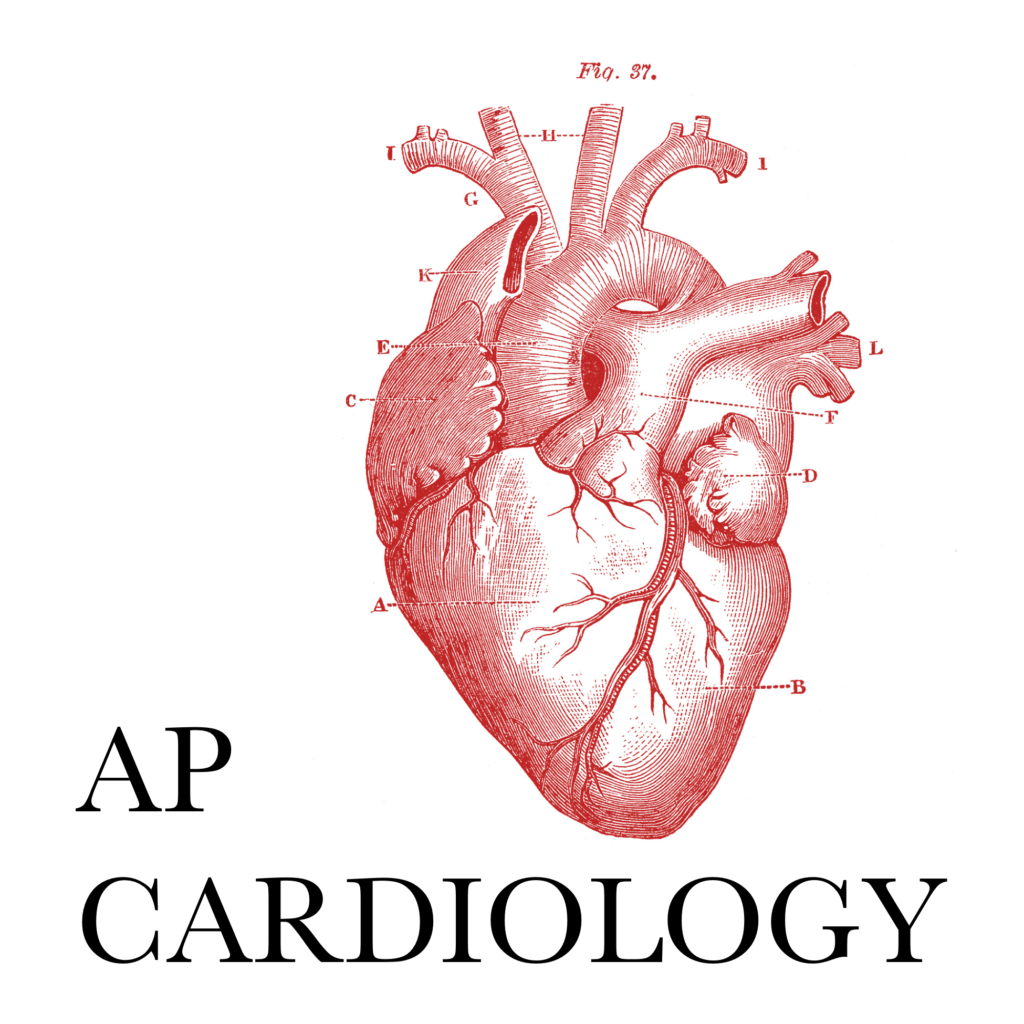Cardiology Jupiter’s clinically-backed advice for reducing cholesterol naturally
Cardiology Jupiter’s clinically-backed advice for reducing cholesterol naturally
Blog Article
Understanding the Significance of Cardiology in Modern Health Care Providers
Cardiology plays an essential function in modern health care, specifically as cardiovascular disease remains to be the leading root cause of death worldwide. Advancements in diagnostics and treatment have transformed client care, allowing earlier interventions and enhanced end results. In addition, the change in the direction of preventative cardiology encourages people to manage their health and wellness proactively. As modern technology remains to progress, the combination of ingenious services may further redefine cardiology's effect on public wellness, triggering a better evaluation of emerging fads and their effects.
The Occurrence of Cardiovascular Disease and Its Impact on Public Wellness
Heart illness remains the leading reason of fatality around the world, its effect extends much beyond specific clients to impact public health systems and economies. The high prevalence of heart condition places a significant stress on medical care sources, requiring raised funding for prevention, rehab, and treatment programs. Public wellness campaigns should attend to risk aspects such as obesity, cigarette smoking, and sedentary way of lives, which add greatly to the climbing incidence of heart conditions.Moreover, the financial burden related to heart condition is immense, including not just straight clinical costs however additionally indirect expenditures associated with lost performance and premature mortality. Neighborhoods encounter challenges in handling these expenses, usually resulting in disparities in health care gain access to and results. As the population ages and lifestyle-related risks remain to intensify, the necessity for reliable cardiology interventions becomes vital. Attending to heart disease is not only a matter of individual health yet additionally an important public health priority.
Advances in Heart Diagnostics and Imaging Techniques
Current developments in cardiac diagnostics and imaging techniques have actually revolutionized the area of cardiology, boosting the capability to keep an eye on and discover heart problem. Techniques such as cardiac MRI, CT angiography, and echocardiography have actually ended up being significantly advanced, giving comprehensive images of heart frameworks and functions. These modalities permit for the early identification of problems like coronary artery illness, heart failure, and valvular disorders.Moreover, advancements in non-invasive diagnostics, such as wearable modern technology and remote surveillance devices, have actually equipped patients and doctor. These tools facilitate real-time monitoring of heart rhythms and other necessary signs, bring about timely interventions. Furthermore, expert system is being integrated into imaging evaluation, improving accuracy and effectiveness in diagnosis.
Technologies in Treatment Alternatives for Heart Conditions
Current improvements in cardiology have resulted in substantial developments in treatment options for heart disease. These consist of advanced medical methods that boost procedural end results and emerging medicines that supply new opportunities for treatment. As the field advances, these innovations play a crucial role in enhancing person care and results.
Advanced Surgical Techniques
Technologies in surgical methods have actually changed the landscape of cardiology, offering new expect people with heart conditions. Minimally invasive procedures, such as catheter-based interventions, have actually substantially reduced healing times and healthcare facility stays. Methods like robotic-assisted surgical procedure boost precision, allowing cosmetic surgeons to navigate complicated physiological structures with greater accuracy. Developments in imaging innovation help with real-time visualization during procedures, improving outcomes. Transcatheter aortic valve replacement (TAVR) exemplifies an advancement in treating aortic stenosis, making it possible for shutoff substitute without open-heart surgical procedure. In addition, hybrid strategies that incorporate catheter-based and medical techniques offer tailored solutions for different heart issues. These advanced surgical strategies not just improve client safety but additionally increase treatment options, underscoring the critical function of development in modern cardiology techniques.
Arising Treatments and medicines
As the landscape of cardiology remains to develop, emerging therapies and drugs play a critical role in boosting treatment alternatives for heart disease. Developments such as novel anticoagulants and progressed lipid-lowering agents have actually transformed the monitoring of heart diseases, greatly lowering individual morbidity and mortality. Furthermore, the development of genetics treatments and regenerative medicine offers encouraging avenues for dealing with conditions formerly regarded permanent. Medical tests are constantly disclosing the efficacy of these treatments, pushing the limits of conventional therapies. Additionally, the assimilation of digital health and wellness technologies assists in personalized medicine, enabling customized therapy strategies based on genetic and way of life factors. Jointly, these advancements emphasize the vibrant nature of cardiology, boosting individual end results and redefining standards of care in contemporary medical care.
The Function of Preventive Cardiology in Client Care
Precautionary cardiology plays an essential role in client care by focusing on the identification of danger aspects that add to heart condition. Through lifestyle modification strategies and early detection methods, medical care providers can effectively reduce the incidence of cardio occasions - Dr Garcia. This proactive method not only improves patient outcomes but additionally advertises long-lasting health
Danger Aspect Recognition
While heart diseases remain a leading source of morbidity and death worldwide, efficient danger aspect identification acts as a keystone of preventative cardiology. Identifying threat aspects such as hypertension, family members, diabetes mellitus, and hyperlipidemia history is vital for early treatment. Healthcare specialists utilize numerous screening methods to review these elements, permitting customized precautionary actions. Additionally, understanding a person's way of life choices, such as smoking cigarettes and physical inactivity, better notifies risk assessments. This thorough analysis allows medical professionals to establish tailored treatment plans intended at mitigating risks. By focusing on threat element recognition, healthcare systems can improve client end results and decrease the general burden of heart diseases, ultimately adding to improved public wellness techniques and source allocation.
Way Of Life Modification Techniques
A plethora of studies highlights the crucial role of way of life alteration strategies in minimizing heart disease risk. These methods incorporate nutritional changes, raised physical activity, cigarette smoking cessation, and weight administration. By taking on a heart-healthy diet regimen rich in fruits, vegetables, entire grains, and lean proteins, people can reduce cholesterol degrees and high blood pressure. Routine exercise strengthens the heart and enhances overall cardiovascular health. Furthermore, quitting smoking greatly minimizes the danger of heart problem and improves healing rates for those with current conditions. Weight monitoring further contributes to cardiovascular health and wellness by reducing various other threat aspects such as diabetes and high blood pressure. Carrying out these way of living transforms not just promotes private wellness however additionally acts as a keystone of preventive cardiology in client care.
Very Early Discovery Methods
Lifestyle alterations considerably contribute to lowering cardiovascular condition dangers, yet they are most effective when coupled with early detection methods. Precautionary cardiology stresses the value of recognizing prospective heart problems before they rise right into serious conditions. Techniques such as blood stress monitoring, cholesterol testing, and progressed imaging modern technologies like echocardiograms play vital roles in evaluating cardio health. Biomarkers and hereditary testing also boost the precision of very early detection, permitting tailored preventative strategies. Normal heart threat evaluations equip healthcare providers to step in proactively, possibly avoiding cardiac arrest and strokes (Dr Garcia). By incorporating these very early detection techniques right into routine care, people can gain from prompt way of living interventions and targeted treatments, inevitably improving and boosting outcomes high quality of life
Integrating Modern Technology Into Cardiology Practices
As advancements in innovation remain to improve various areas, the integration of innovative tools and systems into cardiology methods has actually come to be important for improving patient care and results. Telemedicine systems allow cardiologists to check people remotely, improving accessibility to care while decreasing the worry on medical care centers. Wearable tools, such as smartwatches, enable constant heart rate monitoring, alerting both individuals and medical professionals to possible concerns in real-time. In addition, expert system (AI) is being made use of to evaluate huge amounts of cardiac data, aiding in very early diagnosis and tailored therapy plans. Advanced imaging methods, consisting of 3D echocardiography, boost visualization of heart structures, bring about a lot more specific treatments. Electronic health and wellness records (EHRs) enhance person details administration, ensuring that cardiologists have instant access to essential data. With each other, these technical improvements are transforming cardiology, promoting aggressive administration and improved wellness end results for clients with cardio conditions.
The Importance of Person Education and Involvement
Client education and learning and involvement play a pivotal role in the administration of cardiovascular wellness. By gearing up individuals with knowledge regarding their problems, treatment choices, and lifestyle modifications, medical care companies encourage individuals to take an active duty in their care. This positive strategy can lead to enhanced adherence to suggested medications, dietary modifications, and workout routines, eventually lowering the risk of complications.Engagement likewise cultivates a solid patient-provider relationship, encouraging open communication and count on. When people really feel informed and involved, they are more probable to voice worries and ask inquiries, which can lead to better discover this info here medical end results. In addition, educational resources, such as workshops or digital platforms, can enhance understanding and promote self-management strategies. In general, focusing on patient education and engagement is important for improving cardiovascular health and wellness, enhancing high quality of life, and minimizing healthcare costs connected with heart diseases.
Future Trends in Cardiology and Their Possible Influence

Frequently Asked Inquiries
What Way Of Living Adjustments Can Lower Cardiovascular Disease Threat?
The present question addresses lifestyle adjustments that can considerably decrease heart problem threat. Cardiologist near me. Taking on a well balanced diet, participating in routine exercise, maintaining a healthy and balanced weight, managing stress, and staying clear of tobacco can notably improve cardio health and wellness
How Can I Acknowledge Early Indicators of Heart Problems?
Identifying early indicators of heart issues includes monitoring signs and symptoms such as breast discomfort, shortness of breath, exhaustion, and irregular heart beat. Timely recognition of these indicators can prompt required medical analysis and intervention for far better outcomes.
What Are the Distinctions Between Cardiologists and Cardiac Surgeons?
The distinctions between cardiologists and cardiac specialists hinge on their functions; cardiologists primarily manage and identify heart disease through non-invasive techniques, while heart cosmetic surgeons execute surgical procedures to deal with structural heart problems. Each plays an essential, distinct function.

Exactly how Often Should I Obtain My Heart Wellness Checked?
The frequency of heart medical examination varies based upon private danger factors. Normally, adults need to undergo examinations each to 2 years, while those with current conditions might need more regular evaluations as recommended by health care experts.
What Role Does Genes Play in Heart Illness Risk?
Genes considerably influences heart disease threat, with domestic patterns indicating acquired conditions. Details genes can incline individuals to hypertension, cholesterol problems, and other cardio problems, highlighting the significance of genetic testing in evaluating heart wellness. Heart disease continues to be the leading cause of fatality worldwide, its influence extends much beyond specific patients to influence public wellness systems and economic situations. Public health and wellness campaigns should resolve risk aspects such as obesity, smoking cigarettes, and inactive way of livings, which contribute considerably to the climbing incidence of heart conditions.Moreover, the economic worry associated with heart illness is tremendous, encompassing not only straight clinical costs however additionally indirect expenses related to lost performance and early mortality. Preventive cardiology plays a necessary role in client care by concentrating on the recognition of threat factors that contribute to heart illness. Man-made knowledge (AI) and machine learning are improving diagnostics and individual tracking, enabling very early discovery of heart conditions. The distinctions in between cardiologists and view it now heart surgeons lie in their roles; cardiologists mainly identify and handle heart problems via non-invasive approaches, while heart doctors execute medical treatments to remedy architectural heart problems.
Report this page